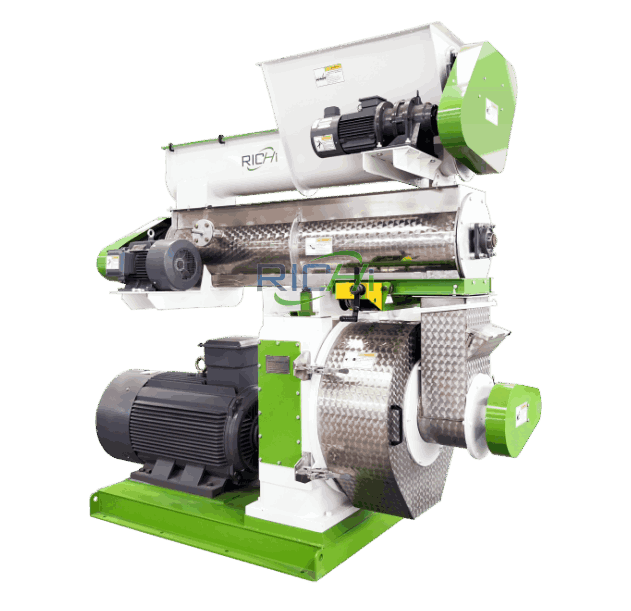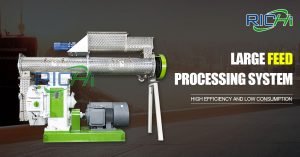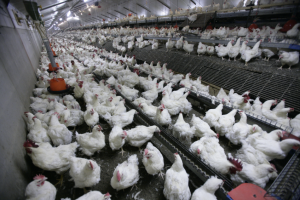As the demand for sustainable and efficient agricultural practices increases, the role of alfalfa pellet making machines in livestock farming continues to grow. Alfalfa is well-known for its high nutritional value, providing a rich source of fiber, protein, and essential nutrients to livestock. The pelletization process—where raw alfalfa is compressed into small, uniform pellets—can enhance the quality of animal feed and improve its overall efficiency.
This article explores how alfalfa pellet making machines can impact livestock health and performance, focusing on nutritional benefits, digestibility, feed consistency, and overall animal well-being.

1. The Nutritional Benefits of Alfalfa Pellets for Livestock
A. Rich Protein Content
Alfalfa is a high-protein forage crop that is commonly used in livestock feed. The protein content in alfalfa is vital for the growth, reproduction, and overall health of animals. Alfalfa contains a good balance of essential amino acids, which are the building blocks of animal proteins. These amino acids are critical for:
- Muscle development
- Tissue repair
- Milk production
- Growth and reproductive functions
By converting alfalfa into pellets, farmers can ensure that the nutrients are more efficiently consumed by the animals. The uniform size and dense texture of pellets make them easier for livestock to ingest, improving feed intake and reducing waste.
B. Rich in Fiber
In addition to protein, alfalfa is also fiber-rich, which plays a crucial role in maintaining healthy digestion in livestock. Fiber is important for:
- Regulating gut health and promoting healthy microbial activity
- Preventing digestive disorders, such as bloating and colic
- Promoting satiety, helping animals feel full and preventing overeating
Pellets made from alfalfa retain these digestive benefits, providing animals with a consistent and reliable source of fiber throughout their feeding period. (Related post: Grass Pellet Machine)
C. Vitamins and Minerals
Alfalfa is packed with essential vitamins and minerals, including:
- Calcium: Important for bone health and reproductive success
- Magnesium: Aids in muscle function and nervous system health
- Vitamins A, D, and K: Support immune function, skin health, and bone formation
The pelletizing process helps preserve these nutrients by reducing oxidation and spoilage. The pellets maintain the bioavailability of these nutrients, ensuring that animals can efficiently absorb them and benefit from their full nutritional value.
2. Improved Digestibility and Feed Efficiency
A. Enhanced Digestibility
One of the most significant advantages of alfalfa pellets is their enhanced digestibility. The pelletization process involves compressing the alfalfa into a dense form, which can improve:
- Fiber breakdown in the digestive system
- Nutrient absorption by making it easier for livestock to access and digest the feed
By providing alfalfa in pellet form, livestock can digest the feed more efficiently, ensuring that more nutrients are absorbed and used for growth and energy. This is particularly important for animals that require a high intake of fiber and protein, such as dairy cows and beef cattle.
B. Improved Feed Conversion Ratio (FCR)
The feed conversion ratio (FCR) is a key performance indicator for livestock productivity. It measures the amount of feed required for an animal to gain a certain amount of weight or produce a specific quantity of milk or eggs. Alfalfa pellets can contribute to a better FCR by:
- Improving feed intake consistency
- Minimizing feed waste, ensuring that animals consume more of the nutrients
- Enhancing the efficiency of digestion by reducing the time and energy spent on breaking down feed
A better FCR translates to lower feed costs and more productive livestock, which benefits both farmers and the animals themselves.
3. Consistency and Quality Control in Feed
A. Uniform Pellet Size and Composition
The pelletizing process ensures that each pellet is uniform in size and composition, which has several benefits for animal health:
- Consistent nutrient intake: Each pellet contains the same nutritional content, so animals are consistently fed the right amount of nutrients.
- Reduced feed waste: Animals cannot selectively consume their preferred parts of the feed, as they do with hay. With pellets, animals consume the feed more uniformly, which leads to less waste and better overall feed utilization.
- Reduced sorting behavior: Livestock that are fed loose, non-pelletized forage often waste valuable nutrients by picking through the feed. Pellets help to reduce this sorting behavior, ensuring that animals consume a more balanced diet.
This consistency in pellet size and nutritional composition is particularly important for livestock farmers who are trying to maintain a high standard of health and performance across a herd.
4. Minimizing Contamination and Feed Spoilage
A. Reduced Risk of Mold and Bacteria
Feed spoilage, particularly due to mold and bacterial growth, is a common issue in livestock farming. Alfalfa, when left in its raw form (such as hay or loose chopped forage), is more prone to spoilage due to its high moisture content. Pelletizing alfalfa helps to:
- Reduce moisture content by compressing the feed, which lowers the risk of mold and spoilage
- Preserve the freshness of the feed, ensuring that it remains nutritious and safe for animals to consume
The reduced risk of contamination and spoilage not only contributes to healthier animals but also reduces the need for expensive and potentially harmful preservatives.
B. Improved Storage and Shelf Life
Pellets are easier to store than loose hay or chopped alfalfa because they are less bulky and more compact. This makes it easier to manage large quantities of feed and reduce storage costs. Additionally, pellets are less likely to lose their nutritional value during storage, as they are sealed tightly and are less exposed to environmental factors like air and moisture.
The longer shelf life of pellets ensures that feed remains fresh and nutritious for a longer period, reducing the likelihood of having to dispose of spoiled or degraded feed.
5. Alfalfa Pellets and Animal Behavior
A. Encouraging Natural Feeding Habits
Feeding livestock alfalfa pellets can also positively influence animal behavior. In the wild, animals forage for their food, grazing throughout the day. Pelletized feed allows for more natural feeding patterns, as animals consume their food in a gradual manner throughout the day, rather than consuming large amounts in one sitting. This:
- Reduces stress in animals
- Encourages natural grazing behavior
- Improves digestion by allowing for more consistent and slower feed intake
This is especially important for animals that are kept in confined environments, as it helps to mimic more natural feeding patterns and improve overall animal welfare.
B. Reducing Feed Aggression
In large herds, competition for feed can often result in aggressive behavior among animals. The uniformity of alfalfa pellets ensures that each animal gets an equal amount of food, reducing competition and stress. This leads to:
- Improved social dynamics within the herd
- Reduced risk of injury from aggressive feeding behaviors
6. The Economic Benefits for Livestock Farmers
A. Lower Feed Costs
By providing high-quality alfalfa pellets, farmers can improve the efficiency of feed utilization, leading to reduced overall feed costs. The reduced waste and improved feed conversion ratios mean that farmers need to purchase less feed to achieve the same level of livestock performance. This translates to:
- Lower operational costs
- Higher profit margins
- More cost-effective livestock management
B. Improved Productivity
With the enhanced nutritional value and digestibility of alfalfa pellets, livestock are more likely to grow faster, produce more milk, or lay more eggs. This leads to:
- Increased productivity per animal
- Faster turnover in commercial operations
- Improved breeding and reproductive performance in livestock
7. The Future of Alfalfa Pellet Making in Livestock Farming
As farmers strive to meet the growing demand for sustainable and efficient feed solutions, the role of alfalfa pellet making machines will continue to evolve. Advancements in pelletizing technology will further improve the nutritional quality, digestibility, and sustainability of alfalfa-based feed, making it even more beneficial for livestock health and performance. (Related post: 25T/H TMR Beef Cattle Grass Alfalfa Pellet Production Line in Brazil)
Conclusion
The use of alfalfa pellet making machines in livestock feed production has far-reaching benefits for both animals and farmers. From enhanced nutrition to improved feed efficiency, these machines contribute significantly to the health and performance of livestock. By reducing feed waste, improving digestibility, and ensuring a more consistent and nutritious diet, alfalfa pellets play a vital role in modern livestock farming, benefiting both the animals and the farmers who care for them.


